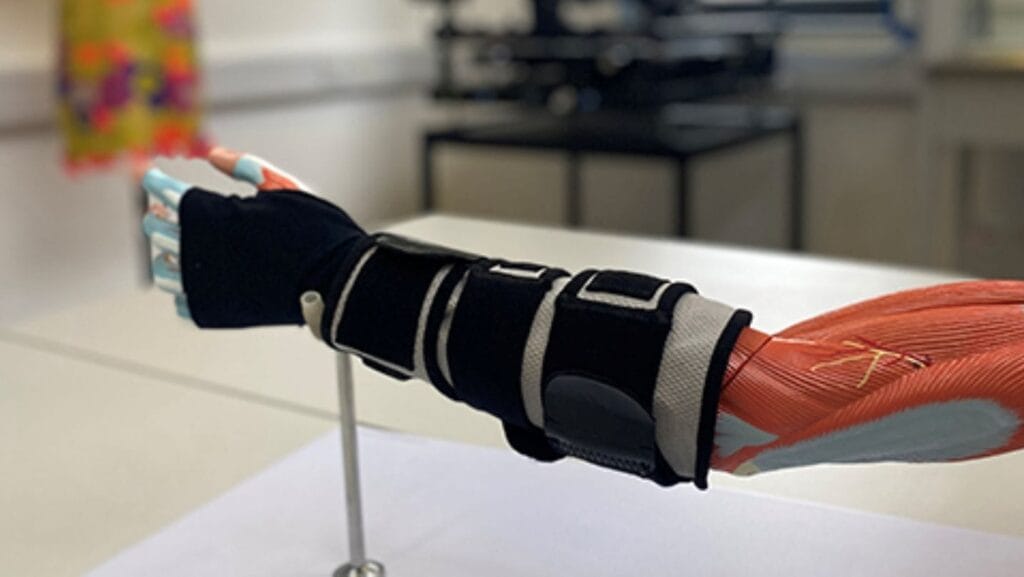

Stroke survivors are able to use a growing number of tools to help them with motor recovery, from smartphone apps to robotic leg assistance. Now, a “smart” glove joins the ranks of stroke rehab tools.
The glove has electrodes built into the sleeve and stimulates nerves in a stroke patient’s hand and arm, researchers explained earlier this week.
At least 11% of senior living residents have had at least one stroke, according to the Centers for Disease Control and Prevention. The CDC also notes that a majority of stroke survivors end up needing some form of mobility rehab.
In a video about the technology, glove designer Kai Yang, PhD, explained that although the recommended exercises seemed simple, for stroke survivors who have weak or no arm movement, the practice is invaluable.
“I wanted to develop something easy for stroke survivors to use,” Yang, who teaches at the University of Southampton in England, said in a statement. “People who have suffered a stroke get fatigued easily. This glove enables them to work on their rehab in small blocks of time when it suits them. With stroke rehabilitation, the more you practice movement, the more you regain muscle strength and mobility.”
Currently, the researchers are testing just one glove prototype with people who have had a stroke. The researchers hope to refine the glove’s design and conduct more usability tests before seeking regulatory approval and possibly look at options for manufacturing the product.
New innovations in robotics and artificial intelligence have helped spur several recent devices for stroke rehabilitation. In addition to the aforementioned ankle-foot robot, other recent tools include wrist-worn wearables and a sensor system that measures arm and back movements, PrimSeq.
More stroke survivors are turning to telehealth appointments for rehabbing as well, McKnight’s Long-Term Care News has reported.


